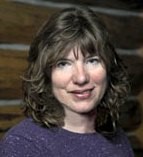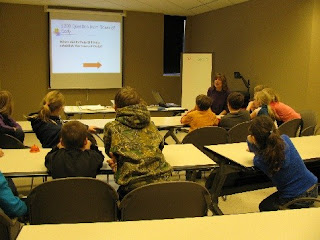Ron’s background is in biology and environmental sciences, though he’s
long nurtured a deep interest in history. Mary started in accounting and then
segued to information technology. Both are detailed researchers and believe
that snapshots of the moment do not cover the complexities of where people and
places developed from. This is especially true in the South, where much of the
history was literally burned away.
RS: As a kid I always liked Revolutionary War history. However, working on my family genealogy in my 30s got me moderately hooked. Researching for the books set that hook.
MB: I’ll give Ron primary credit for
stoking my interest in history. I tend to be a here-and-now or
looking-to-the-future person, and Ron’s thoughtfulness about the past has
strengthened my appreciation for it.
2. What role does history play or has
it played in your personal life?
RS: My family has interesting
historic moments. One in particular is that my Great Grandfather served in the
US Army during the Civil War. That’s pretty dramatic when his home county was
overwhelmingly Confederate. Also, my father worked on the Apollo missions that
put humans on the moon. So, it’s a bit of a “Forrest Gump” story (not the major
players, but right next to their shoulders).
MB: My fraternal grandma--whom I
spent a lot of time with as a child--would talk about traveling for days in a
covered wagon as a little girl. She also recounted that my grandfather hung her
by her dress on the coat hook of their door once when she was being ornery as a
16 year-old bride. It made me realize that to truly understand someone’s multi-dimensional
view of the present, you must tap into their stories of the past. The same is
true for places and organizations.
3. How is/How was history a part of
your professional life/career?
RS: Over the last 18+ years, I have
worked next to cultural resources professionals (archeologists,
anthropologists, architectural historians, etc.). I have learned a lot from
their work, papers, and presentations.
MB: I tapped history in a different
way…by being able to remember problems and solutions of the past to help solve
tricky technical problems in my IT work. You can save a lot of time if you
remember and honor lessons already learned!
4. Why is studying/knowing history
important?
RS: To me it’s understanding context.
X affected Y, and became what we now know of as Z. This can be seen in the
blending of people, their cultures, their food, their drink, to become
something new…like New Orleans.
MB: In some ways, I think humans
elevate themselves when they explore, document and preserve knowledge and
artifacts of history. The richness of life is lost if we lose track of the
events and developments that shaped who we are. Understanding the past can help
dispel a lot of faulty assumptions, too, or at least make them less powerful.
5. What is your favorite period or
aspect of history to learn about and why?
RS: The US “Roaring Twenties” and the
Gilded Age that led up to the 1920s. In my opinion, modern America was
developed in the 20s: modern advertising, social change for women, wide-scale
credit, “off time” for the average worker, and casting off of Victorian mores.
MB: Hmmm. I’m not tied to a specific
time, but I am intrigued by events where the role of women in society changed.
I love learning about particular women or groups that defied the norms and
shook things up. Oddly, then, I have to give a lot of credit to Frances
Willard, who in leading the Woman’s Christian Temperance Union fought for
equality and took a much higher public profile than was typical for women.
6. Tell us about your book
Prohibition in Atlanta: Temperance, Tiger Kings and White Lightning.
The beginning of the book was really the
prohibition chapter in Atlanta Beer.
That was by far the hardest chapter to write, but we kept distilling the
information to a workable chapter. The feedback from readers was very positive,
yet we knew that we’d only been able to present the Reader’s Digest version. In
Prohibition in Atlanta, we were able
to give a more thorough visit to the very long history of prohibition in
Atlanta—which goes back to General (Governor) Oglethorpe’s ban of “demon rum.”
The book is about the ups and downs
in regard to perceptions of alcohol, but to frame those cycles we discuss the
religious, gender, race, and political climates across decades (a couple of
centuries, really). There are some unexpected connections, such as that the
women active in the temperance movement were also highly influential in securing
voting rights for women. From the standpoint of the alcohol industry, reviewing
this evolution certainly helps explain the messy remnants of blue laws and
local option that exist today across Georgia.
7. What history related projects are
you working on currently?
RS: I keep researching beverage
history as I can. I’m currently reading Wood,
Whiskey and Wine: A History of Barrels by Henry H. Work. Fascinating--and
it might be useful in future writing. Maybe something more light-hearted about
the history of drinks is in the shaker.



